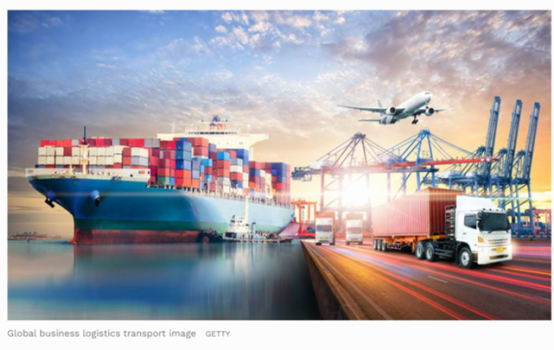K
Kathleen Martin
Guest
In the first blog in the AI transportation and logistics series, I featured AI transformation innovations at Purolator; the second blog focused on the acceleration of smarter AI telematics in fleet management. The third blog explored AI emotion sensors and the impact that the affective computing market is having on the transportation and logistics industry. The fourth blog discussed AI revenue growth and operational optimization use cases relevant to the T&L industry and touched on drones and their economic impact.
This fifth blog discusses the impact of smarter intelligence integrated into the supply chain management (SCM) value chains, from picking, sorting, delivering, and all sales and customer service operations. A complete technology end-to-end connected - IoT a smarter AI sensor value chain, where humans are the strategic architects, controlling the dynamics of their SCM ecosystems, determining and adjusting in real-time operational requirements.
We will see in our life time, more robots, cobots, driverless vehicles and smarter IoT sensor highways integrated creating this realtime pulse that will reshape millions of jobs around the world.
Sound far-fetched. Likely in my life time, I won’t see all of this come together. However, my children likely will.
Just look how at some history of the origin of the aerospace industry which dates to 1903 when the Wright brothers demonstrated an airplane capable of powered, sustained flight. The world’s first scheduled passenger airline service took off in 1914, operating between St. Petersburg and Tampa, Florida. This historical event helped advance daily transcontinental flights.
In just 100 years, we went from literally no airplanes in the sky, to having over 250 international airlines, and over 5,000 airlines having official ICAO codes.
Let’s compare this speed to the speed of the drone and IoT smart logistics industry transformation. What are the drivers of the change. Perhaps four key drivers are noteworthy 1) the disappearance of space and time barriers 2.) the ability to stay connected while on the move 3.) The Internet of Things and 4.) The universality of the internet and rise of cloud computing enablements. The outcome - smarter connections in everything.
Continue reading: https://www.forbes.com/sites/cindygordon/2021/10/31/advancing-ai-smarter-intelligence-everything-in-the-transportation-and-logistics-industryindustry-series-blog-5/?sh=31ff2f347837
This fifth blog discusses the impact of smarter intelligence integrated into the supply chain management (SCM) value chains, from picking, sorting, delivering, and all sales and customer service operations. A complete technology end-to-end connected - IoT a smarter AI sensor value chain, where humans are the strategic architects, controlling the dynamics of their SCM ecosystems, determining and adjusting in real-time operational requirements.
We will see in our life time, more robots, cobots, driverless vehicles and smarter IoT sensor highways integrated creating this realtime pulse that will reshape millions of jobs around the world.
Sound far-fetched. Likely in my life time, I won’t see all of this come together. However, my children likely will.
Just look how at some history of the origin of the aerospace industry which dates to 1903 when the Wright brothers demonstrated an airplane capable of powered, sustained flight. The world’s first scheduled passenger airline service took off in 1914, operating between St. Petersburg and Tampa, Florida. This historical event helped advance daily transcontinental flights.
In just 100 years, we went from literally no airplanes in the sky, to having over 250 international airlines, and over 5,000 airlines having official ICAO codes.
Let’s compare this speed to the speed of the drone and IoT smart logistics industry transformation. What are the drivers of the change. Perhaps four key drivers are noteworthy 1) the disappearance of space and time barriers 2.) the ability to stay connected while on the move 3.) The Internet of Things and 4.) The universality of the internet and rise of cloud computing enablements. The outcome - smarter connections in everything.
Continue reading: https://www.forbes.com/sites/cindygordon/2021/10/31/advancing-ai-smarter-intelligence-everything-in-the-transportation-and-logistics-industryindustry-series-blog-5/?sh=31ff2f347837

